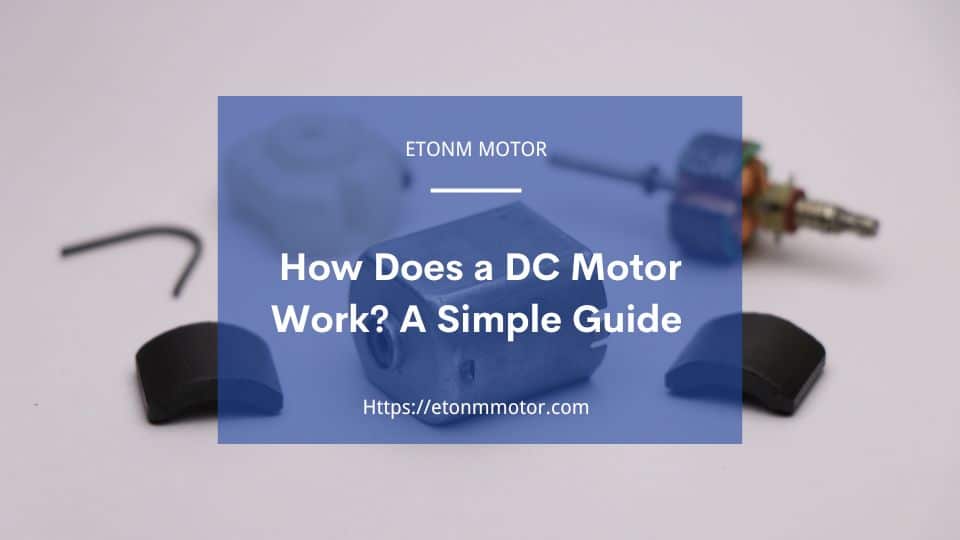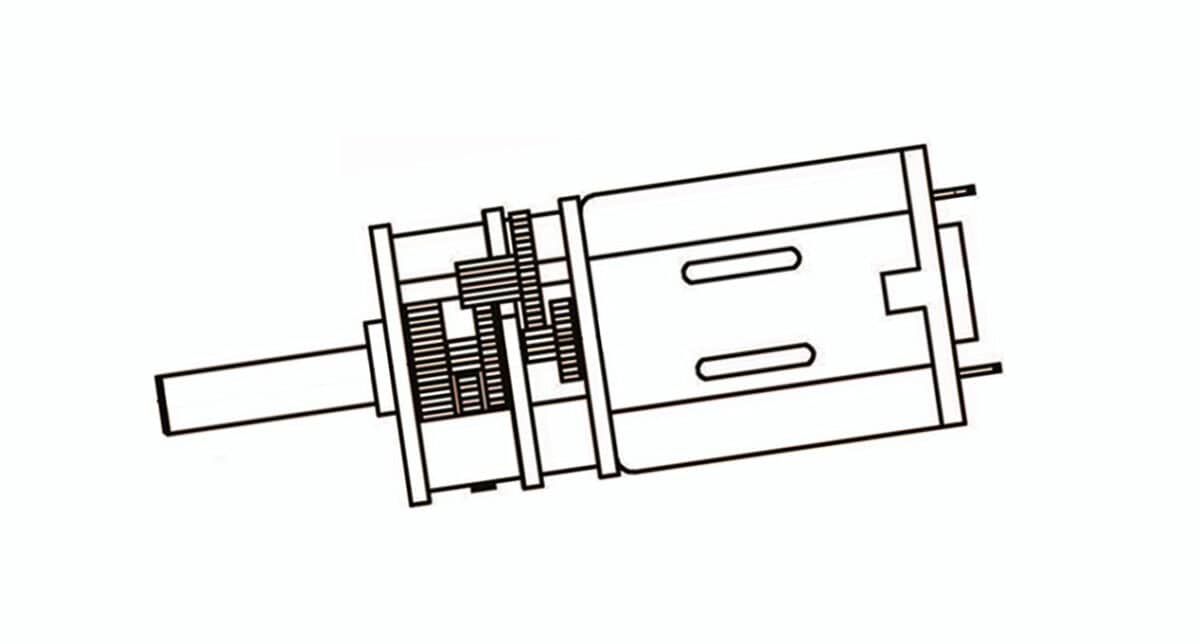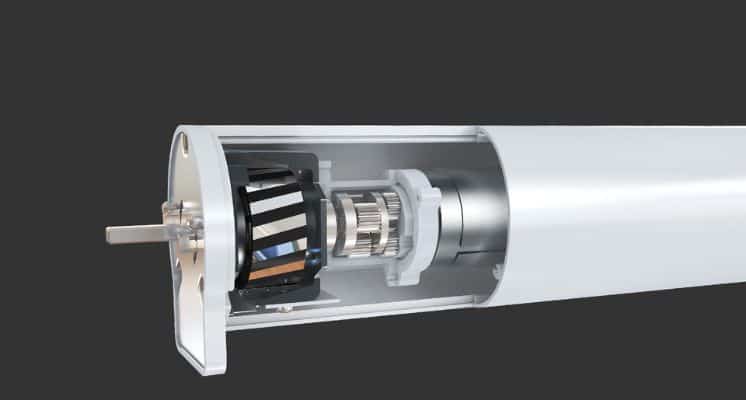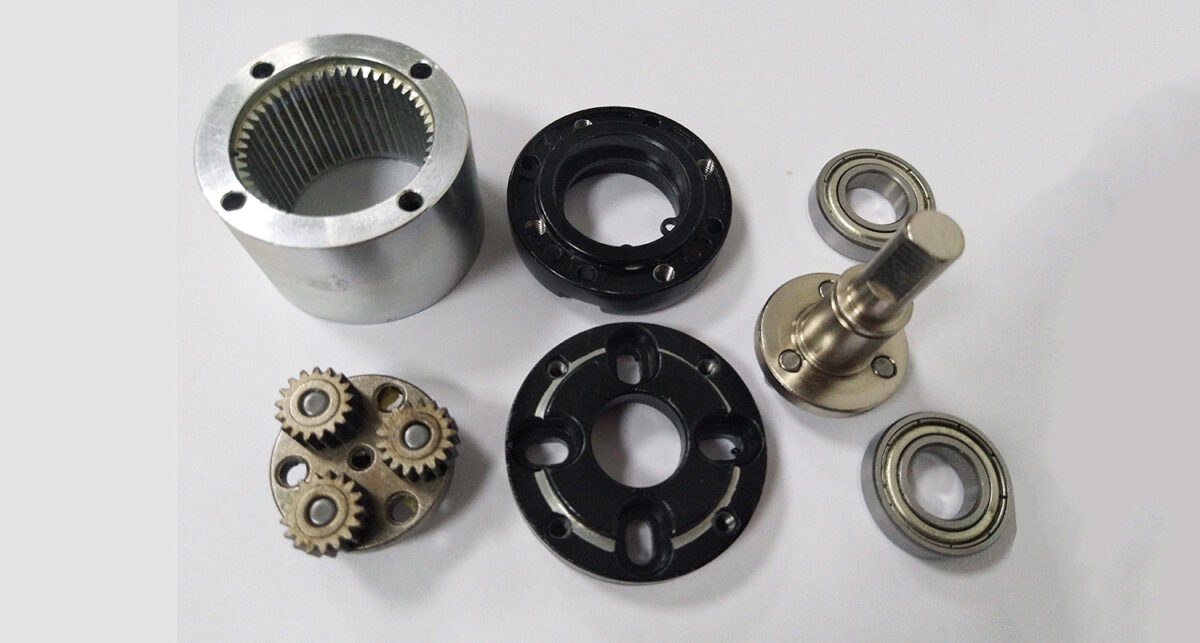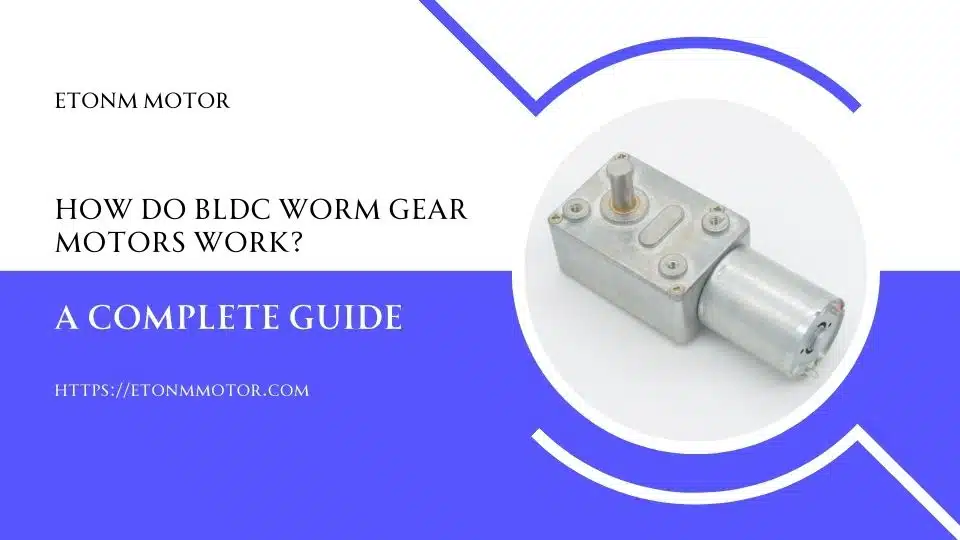Curious about how a DC motor powers your devices? This simple guide breaks down its workings, from basic components to real-world uses, brought to you by Etonm Motor.
Table of Contents
Introduction
Ever wondered what makes your electric toothbrush buzz to life or how those tiny robots in your kid’s toy set zip around? Chances are, there’s a DC motor behind it all. These little powerhouses are everywhere—quietly spinning away in smart home gadgets, vending machines, and even high-tech medical devices. But how does a DC motor work, exactly? If you’ve ever scratched your head over that question, you’re in the right place.
In this guide, we’re pulling back the curtain on DC motors in a way that won’t leave you drowning in tech jargon. Think of it as a friendly chat about how these motors turn electricity into motion—and why they’re such a big deal in the stuff we use every day. From the basic parts inside to how they actually get moving, we’ll walk you through it step by step. Plus, we’ll toss in some real-world examples (spoiler: they’re in more places than you’d guess!) to show why companies like us at Etonm Motor are so passionate about perfecting them. Ready to dive in? Let’s get started.
What Is a DC Motor? The Basics Explained
So, what’s a DC motor all about? At its heart, it’s a nifty little device that takes electrical energy—straight from a battery or power supply—and turns it into motion. That spinning action is what powers everything from the fan in your air purifier to the wheels on a robotic vacuum. If you’re new to this, don’t worry—the DC motor basics are simpler than they sound.
DC stands for “direct current,” which just means the electricity flows in one steady direction (unlike the back-and-forth of AC, or alternating current). That consistent flow is what makes DC motors so reliable for all kinds of jobs. Picture a tiny engine that doesn’t need gas—just a jolt of power to get going. Whether it’s opening a smart home curtain or dispensing soap in a touchless sanitizer, these motors are the unsung heroes keeping things moving.
Why do they matter? Well, they’re small, efficient, and versatile—perfect for the gadgets we rely on daily. At Etonm Motor, we’ve seen them shine in everything from security systems to medical tools, proving that good things really do come in small packages. Stick with us, and we’ll break down how these motors pull off their magic in the next section.
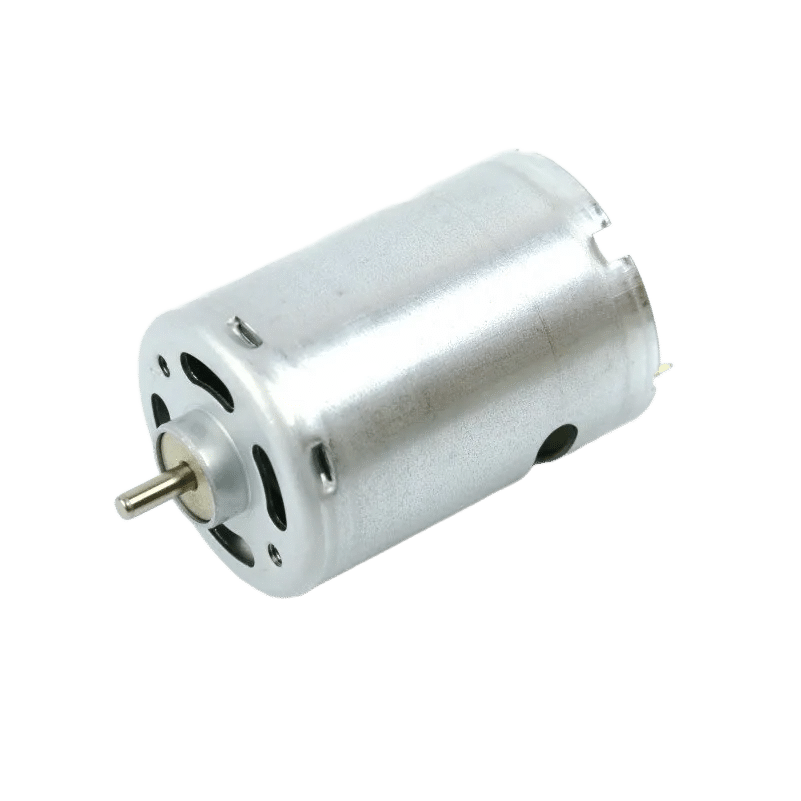
Key DC Motor Components You Should Know
Okay, now that we’ve covered what a DC motor is, let’s pop the hood and peek inside. The magic of a DC motor comes down to a handful of key parts working together like a well-rehearsed band. Understanding these DC motor components isn’t just geek trivia—it’s the secret sauce behind why they’re so darn useful. Here’s the lineup.
1. The Rotor and Stator: The Dynamic Duo
First up, meet the rotor and stator—the heart and soul of the motor. The rotor is the spinning part, kind of like the pedals on a bike that keep things moving. Wrapped with wire coils, it sits inside the stator, which stays put and acts like the frame holding everything together. The stator’s got magnets (or more coils) that create a magnetic field. When electricity flows through the rotor, those magnets push and pull it into motion. Simple, right? But oh-so-clever.
2. Brushes and Commutator: Keeping the Beat
Next, for traditional brushed DC motors, we’ve got the brushes and commutator. Think of the brushes as little messengers delivering power to the rotor. They’re usually made of carbon and press against the commutator—a segmented ring that spins with the rotor. As it turns, the commutator flips the electrical current’s direction, keeping the rotor spinning smoothly. It’s like a conductor waving a baton to keep the orchestra in sync. (Side note: brushless motors skip this duo for a smoother, longer-lasting gig—something we at Etonm Motor love tinkering with.)
These components are the backbone of every DC motor, whether it’s powering a tiny valve in a water meter or a robot arm in a factory. At Etonm Motor, we tweak them to fit specific needs—say, extra durability for a vending machine or precision for medical gear. Up next, we’ll walk you through how they all team up to make the motor hum.
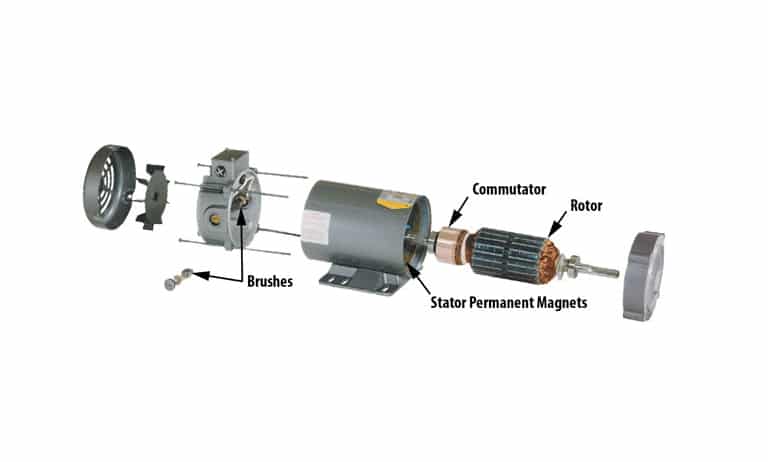
How Does a DC Motor Work? Step-by-Step
Alright, we’ve met the players—now let’s see them in action. How does a DC motor work? It’s not rocket science, but it’s pretty cool how a few simple steps turn electricity into motion. The DC motor operation boils down to a clever dance between power and magnetism. Here’s how it all comes together, step by step.
1. Powering Up: Electricity Kicks Things Off
It all starts with a power source—say, a battery or a wall adapter. When you flip the switch, direct current (DC) flows into the motor through those brushes we talked about (or straight to the coils in a brushless version). The current zips into the rotor’s wire coils, creating an electric field. Think of it like pouring fuel into an engine—except here, it’s electrons getting the party started.
2. Creating Motion: Magnets Make It Spin
Here’s where the real magic happens. The stator’s magnets (or its own coils) set up a steady magnetic field around the rotor. When the rotor’s electric field meets that magnetic field, they push and pull against each other—like two kids on a playground seesaw, but way faster. This force spins the rotor, and voilà—motion! The commutator (in brushed motors) keeps flipping the current to maintain the spin, while brushless motors use smart electronics to do the same job. It’s like pedaling a bike: once you get going, the rhythm keeps you rolling.
That’s the gist of it! The spinning rotor can then drive gears, wheels, or whatever’s attached—whether it’s a smart home gadget or a robotic arm. At Etonm Motor, we fine-tune this process to match the job, like making sure a micro DC motor in a medical pump runs whisper-quietly. Want to know more about the different flavors of DC motors? That’s up next.
Types of DC Motors and Their Differences
Now that you know how a DC motor works, let’s talk flavors. Not all DC motors are cut from the same cloth—different types of DC motors suit different jobs, kind of like picking the right tool from a toolbox. The big divide? Brushed versus brushless. Each has its own vibe, and understanding the differences can shed light on why one might show up in your toothbrush while another powers a factory robot. Let’s break it down.
1. Brushed DC Motors: The Classic Workhorse
Brushed DC motors are the OGs of the motor world—simple, affordable, and tough. They use those brushes and commutator we mentioned to keep the rotor spinning. They’re great for straightforward tasks where cost matters more than finesse, like powering a cheap toy car or a basic vending machine dispenser. The catch? Those brushes wear out over time, so they’re not the longest-lasting option. Still, for short-burst jobs, they get it done without breaking the bank.
2. Brushless DC Motors: The Modern Maverick
Then there’s the brushless DC motor—think of it as the sleek, upgraded cousin. Instead of brushes, it uses electronic controls to manage the current, which means less friction and wear. The result? They run quieter, last longer (some studies say up to 50% longer in heavy-duty use), and handle high-precision tasks like a champ. You’ll find them in robotics, smart home devices, or even medical pumps where reliability is non-negotiable. The brushless DC motor vs brushed debate often comes down to this: pay a bit more upfront for efficiency, or stick with the budget-friendly classic.
Both have their place, and at Etonm Motor, we craft each type to fit the gig—whether it’s a rugged brushed motor for a security lock or a brushless one for a silky-smooth sanitary dispenser. Curious where these motors pop up in real life? That’s what we’ll explore next.
Click here to learn more about the differences between brushed DC motor and brushless DC motor.
DC Motor Applications in Real Life
By now, you’ve got the lowdown on how DC motors work and the different types out there. But where do these little champs actually show up? The truth is, DC motor applications are all around us—hiding in plain sight in the stuff we use every day. From tiny gadgets to heavy-duty gear, they’re the quiet MVPs making life smoother. Let’s take a peek at some spots where they shine.
1. Smart Homes and Everyday Gadgets
Ever tapped a button to lower your motorized blinds or watched a smart lock click into place? That’s a DC motor at work. Micro DC motors are used widely in smart home tech—they’re small enough to fit in tight spaces but strong enough to get the job done. Think automated curtains, touchless soap dispensers, or even the motorized trays in your fancy coffee maker. At Etonm Motor, we’ve dialed these in for precision and reliability so your morning brew doesn’t miss a beat.
2. Robotics and High-Tech Tools
DC motors aren’t just for home stuff—they’re big players in robotics, too. Picture a warehouse robot zipping around or a surgical tool making tiny, exact moves. Brushless DC motors often take the lead here, thanks to their efficiency and control. In fact, a study from IEEE notes they’re a go-to for robotics because of their durability—pretty critical when you’re dealing with million-dollar machines. We’ve tailored plenty of these at Etonm Motor for clients in medical care and automation.
3. Beyond the Basics
They pop up in other cool places, too—like electric valves in water meters or the coin dispensers in vending machines. These are the kinds of jobs where a motor’s size, power, and lifespan have to line up just right. Want to see more examples? Check out our Micro DC Motor page for a closer look at how we put them to work.
From your living room to a factory floor, DC motors are the unsung heroes of motion. Next up, we’ll wrap this all together and point you to some next steps.
Conclusion
So, there you have it—a front-row seat to the world of DC motors! We’ve walked through how does a DC motor work, from its basic components to the clever way it spins electricity into motion. We’ve peeked at the brushed and brushless types, and seen them pop up everywhere—from your smart home gadgets to high-stakes robotics. It’s pretty amazing how something so small can power so much of our lives, isn’t it?
Next time you hear that faint hum in your electric toothbrush or watch a robot vacuum dodge your cat, you’ll know the magic behind it. At Etonm Motor, we’re all about harnessing that magic—crafting motors that fit just right, whether it’s for a vending machine or a medical tool. Want to dig deeper into what we can do for you? Swing by our product page or drop us a line—we’d love to chat about your next project. After all, a good motor doesn’t just spin; it solves problems.
Related Reading
- Planetary Gearbox Explained: How It Works
- What Determines the Speed of a Brushless DC Motor?
- DC Motor Parameters You Need to Know Before Choosing
- What Is DC Motor Torque? A Simple Guide by Etonm Motor
- How Does a Brushless DC Motor Work? A Complete Guide to BLDC Motors
- How Do BLDC Worm Gear Motors Work? A Complete Guide
- The Ultimate Guide to Brushless DC Motors: Types, Applications, and Benefits

